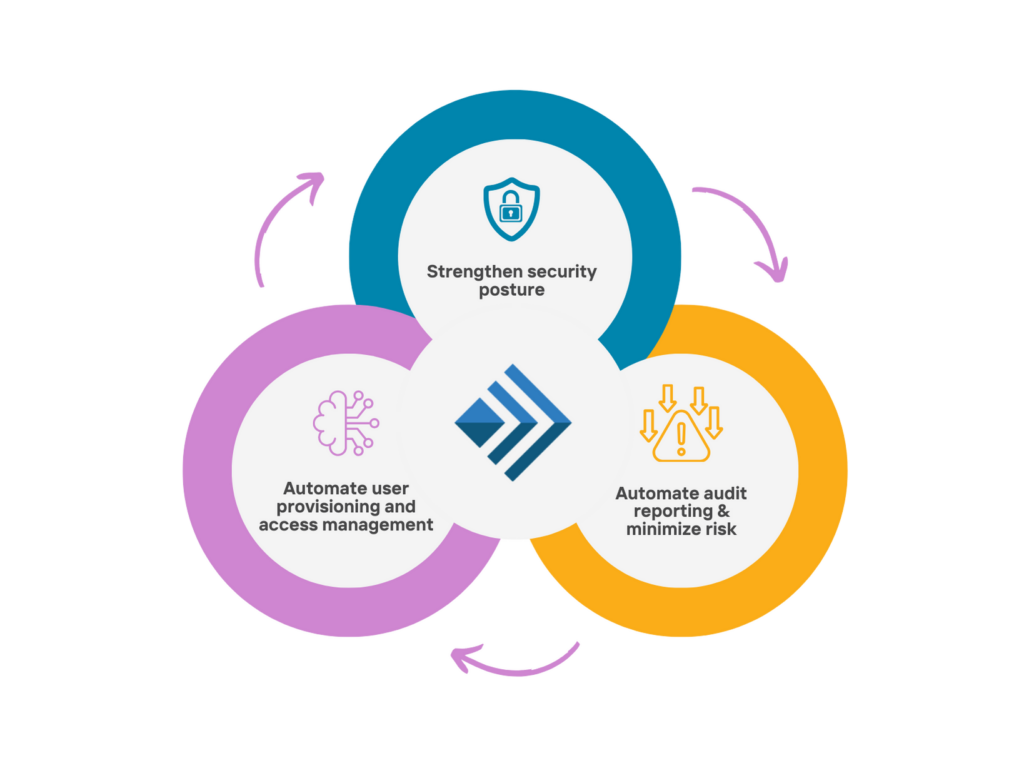
Secure Seamless IAM is the end goal of all Identity Management rollouts. Yet to the outside observer getting a system that is both secure and easy to use sounds like a pipe dream.
But in a twist of expectations, the entire reason why IAM can become frictionless is because of its high security. On the surface this seems to be a paradox. To those familiar with building effective IAM, it makes perfect sense.
Explaining how security and usability feed into each other requires a deep dive into a few frequently misunderstood concepts, most of all the recent trend towards Zero Trust. A high number of executives and even security officers misunderstand the role of this crucial new development. Explore how Zero Trust and similar measures deliver Secure Seamless IAM to your enterprise.
What makes an IAM Solution Insecure?
Inexpertly crafted high-security solutions struggle to balance security and user experience, with cumbersome password requirements being the most common symptom. Passwords requiring 14 to 16 characters, the use of special symbols, and lacking any sort of reminders of password parameters make logging in an instant pain point. Another prevalent problem is constant challenges by excessive MFA (Multi-Factor Authentication). Constant confirmations do not provide additional security and can become a gap in security due to MFA fatigue. Many enterprises cut out secure practices in the name of an easier, more retentive, customer experience.
However, eliminating these annoyances wholesale puts the state of the system right back to what necessitated the security measures in the first place. Removing frustrating safeguards like captcha or limited attempts allows for easy botting and brute force attacks. There must be a balance between securing data and enabling a seamless user experience, especially on customer-facing systems. To overcome this challenge, savvy enterprises enable customer authentication through passwordless methods like magic links or biometrics.
Employee-facing systems are usually easier to secure, but challenges arise when businesses move to the cloud or subscribe to multiple SaaS (Software as a Service). The solution must identify and authenticate employees with every login whether on-site or remotely. Additionally, many businesses want to use a single scalable system for both employees and customers. Simeio Vice President, Vikram Subramanian says that “employee authentication should resemble customer authentication but must be user-aware enough to prompt a higher level of authentication for employees versus customers.”
Zero Trust in Secure Seamless IAM
Zero Trust constantly comes up in cybersecurity circles. The shifting borders and perimeters around systems necessitate a flexible security paradigm, especially with the acceleration of interconnectivity. The widespread uptick in employees working from home and the use of mobile devices has swollen potential attack surfaces to new sizes. Longstanding flaws in conventional security methodology are mitigated yet unsolved. Zero Trust offers a means of addressing all these needs, being nothing less than a full shift from credential-based authentication to identity-based.
In a Zero Trust system, passwords are removed from the equation and replaced with a myriad of alternative methods. Zero Trust policy uses a combination of biometrics, facial recognition, paired devices, and other user-independent factors. Implementation of the Zero Trust principles is what makes use secure and easy, with automation playing a key role. This gives users a seamless experience and delivers vital analytics so enterprises can institute the best policies for their specific needs. Zero trust informs; it does not solve on its own.
Intelligent policy addresses longstanding weaknesses like the implementation of MFA. Delivery methods make codes more resistant to compromise. Dedicated offline-capable apps and paired devices are secure and easy to use examples. Zero Trust accounts for the possibility of device theft with multi-layer defenses. Biometrics, facial recognition, and geographic tracking all make a successful breach harder to pull off. Zero Trust policies recognize that anything can be breached: the trick is tilting the odds in the defenders’ favor.
Instituting Secure Seamless IAM
When enterprises look to start using Zero Trust in their systems, one of their most common touchstones is the FIDO Alliance. This mutual agreement of major companies is based around accelerating the widespread adoption of passwordless policy and provides a list of best practices for company security. However, the list does not require the identity tracking crucial for proper Zero Trust implementation. While FIDO provides some guidance, compliance with their minimum protocol does not address the security needs of your specific enterprise. Proper implementation demands dedicated expert attention.
Easily the biggest impediment to instituting effective Zero Trust is the misunderstanding around it. Zero Trust isn’t a single platform; it’s a guiding paradigm which informs a multi-faceted implementation. This can be a hard realization for CEs who prefer a one-and-done application they can pay for to solve their problem. The other stumbling block is that Zero Trust taken too literally compromises user experience, putting users right back where they started. Lastly, Zero Trust is evolving as a policy and not just as a technology. Rollouts must account for new vendors coming up and consolidating implementation layers.
Investing in a dedicated and expert Identity Service provider is the ideal option for enterprises looking for secure seamless IAM. Such providers analyze your business top to bottom, advise on the best course of action, and put that into practice through an efficient rollout. Consider how policy comes into play when a user loses a paired device or has it compromised. Sound policy allows the unique user to prove their identity through remote identity proofing solutions. This allows an organization to facilitate the recovery, preserving security and usability even in such an extreme circumstance.
Simeio’s Secure Seamless IAM
Achieving secure seamless IAM through Zero Trust relies upon an expertly instituted policy. Simeio offers exactly this brand of comprehensive customer-centric advisement and application through the Simeio IO (Identity Orchestrator) platform.
If your enterprise wants a deliverable Identity solution custom-tuned to your exact parameters and needs, talk with an Identity advisor now and get started on the path to you Secure Seamless IAM solution.
